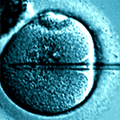Many pathologies like neuro-degenerative diseases, post-brain stroke or post-heart failure disorders provoke temporo-spatial disorientation, leading to many errors during the execution of tasks along the daily activity until observing a pathologic perseveration, i.e., an abnormal repetition of successful performed tasks (e.g., a pathologic recurrence of buying successively the same object) which causes a deep handicap in fulfilling current vital functions. Many other impairments from traumatic or familial origin cause also losses of autonomy in the current life. Hence, for caring persons suffering these diseases or handicaps bioengineers since more than 20 years [1] have invented procedures to acquire, process and interpret surveillance at home data in order to get reliable task performance parameters useful for triggering alarms and/or diagnosing pathologies like Alzheimer disease or severe obesity or diabetes allowing autonomous life at home and preventing complications or failures, namely in the present pandemic context [2],[3].
This surveillance activity implies an adapted activity recording involving sensors both in the flat and on the person allowing to draw individual daily actimetry profiles comparable to mean canonical profiles corresponding to clusters grouping samples of reference cases accounting for the actimetry variability in a population. This data acquisition involves also the use of fixed and/or portable medical imaging devices in order to watch the person, and then perform a fast medical data management procedure on smart phone or in the cloud to find the reference profile matching the best with those of the observed individual. When available, it is possible to query the diagnosis or prognosis decision in an adequately modelled data base permitting the search under hybrid criteria (qualitative, corresponding to medico-socio-economic data about the environment of the surveyed person as well as quantitative, e.g. those provided by localization sensors). The reference data request is made easier by defining ontologies from the concepts underlying the observed variables like dependence index, frailty score, memory performance, social class, existence or not of familial or medico-social helpers, economic resources, etc. Ontologies allow to build knowledge-based systems (KBS, i.e. systems for rapidly querying knowledge bases, which are a special kind of databases for knowledge management). For taking alarm decisions after querying and matching information from sensors to that from KBS, we use AI facilities.
One of the main functionalities of KBS is to properly define and organize thanks to an ontology, the concepts to which a given variable to observe is related, these concepts being described by a set of qualitative (Boolean or discrete) or quantitative (discrete or continuous) variables, allowing decisions of expert type, e.g. by assigning a set of surveillance data to a class of concepts in the context of a diagnosis task considered as a classification problem, or by finding all diseases related to a concept or obeying an assertion in the context of querying a KBS. If the description of concepts is done from censored, missing or uncertain data, we talk about a random classification problem. A random classification problem is based on the estimation of only the joint probabilities distribution corresponding to the observations of random variables and it is used to describe the concepts, identified as events inside the σ-algebra generated by these random variables. A Generalized Data Warehouse (GDW) can be used as a particular KBS structuring the surveillance data through the σ-algebra generated by the random variables defining its assertions.
For presenting the research in the field of the present special issue, we have proposed as general topic the capture of information for surveillance and medical decision concerning dependent persons in their place of life, assuming that the collection of data can be done by sensors located on the person or placed in his immediate surroundings, and data processing and modeling can be performed remotely in order to help in real time individuals or to constitute in a second time public data bases helping health policies. The precise subjects were listed as presence sensors, fall sensors, specific activity sensors, signal processing of e-health sensors, detection of abnormal activities, identification of digital phenotype profiles and determinants of individual circadian activity, modeling of emerging diseases at population level and forecasting epidemic outbreaks at local, regional and national levels.
Many technical or informatic tools issued from the bioengineering knowledge, necessary for ensuring the surveillance of dependent persons at home, as sensors, portable medical imaging devices within the frame of a medical data management on smart phone or in the cloud are described in the present volume.













 DownLoad:
DownLoad: